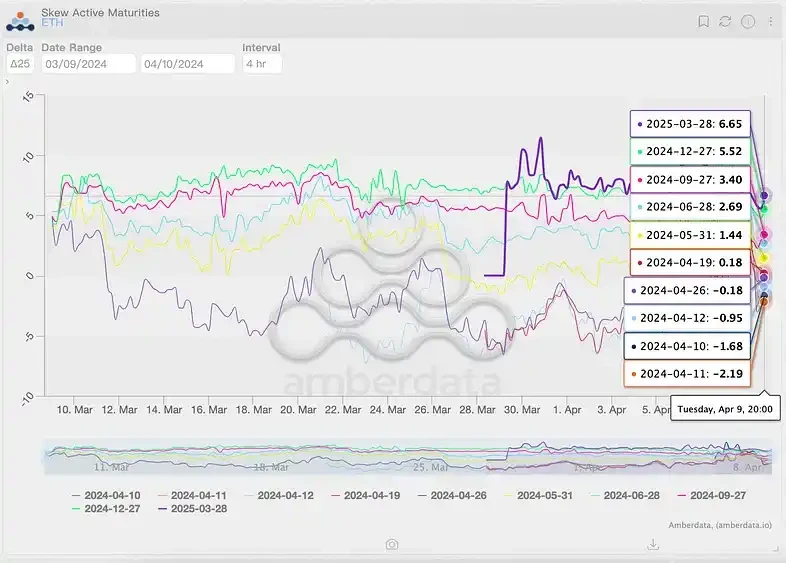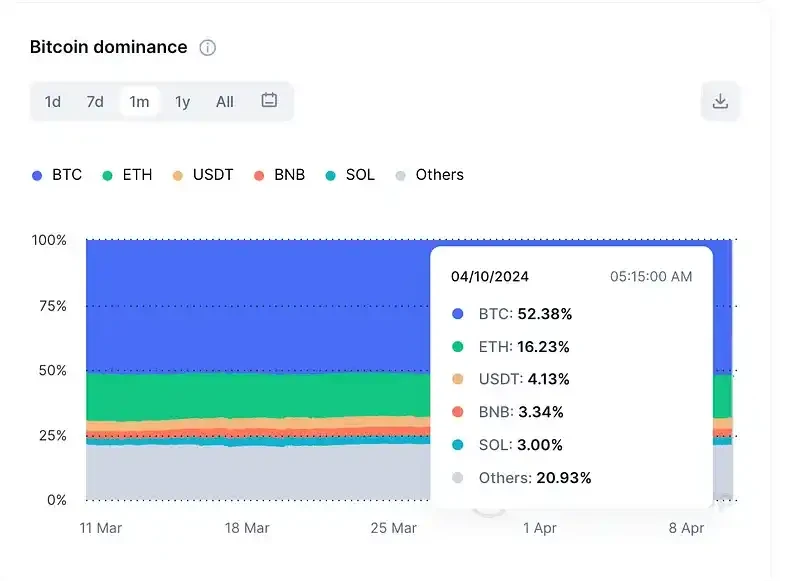Original title: Blofin Whales View: War, Gold and Crypto
Original author: Blofin
Original compilation: Lila, BlockBeats
The increase in global uncertainty is one of the main reasons for the recent continued increase in liquidity levels in the crypto market, and is also an important reason for the recent strong performance of Bitcoin.
Due to the lack of hedging properties, the performance of altcoins depends more on changes in macro liquidity and the game state of funds on the market.
Altcoins have gained some advantages in the competition for liquidity compared to ETH, which has further adversely affected ETHs performance.
Bull market in geopolitical crisis
After the release of U.S. non-farm payrolls data last week, the lower-than-expected interest rate cut seems to have been gradually accepted and digested by investors.
This week, central banks led by the European Central Bank will also announce their latest interest rate decisions. Although Europes performance on inflation is much better than that of the United States, and the European Central Banks expectations for interest rate cuts are higher, considering the ECBs weaker influence relative to the Federal Reserve, it is certain that global cash liquidity will return to risky asset markets in the future. The pace will slow down. For the cryptocurrency market, the bull market may be more moderate and long-lasting.


However, reality does not seem to be the case. The return of cash liquidity within the cryptocurrency market has accelerated significantly since early April. In the past week, the entire cryptocurrency market received nearly $3 billion in cash liquidity, and the overall cash liquidity scale has returned to the same period in the third quarter of 2022. Affected by this situation, the prices of BTC, ETH, and other altcoins have received strong support, and market sentiment has recovered significantly. What caused the abnormal changes in cash liquidity?
Let’s take a look at the performance of other assets. While Bitcoin hit a new all-time high, the price of gold rose by more than 25% in 6 months and also broke through the all-time high. Meanwhile, silver and copper prices are also near their highest in nearly a year. Rising gold prices are often associated with risk aversion. As a long-standing hard currency, gold is an important hedge when macro uncertainty rises, especially amid geopolitical tensions.
However, things get interesting when we look at price trends in silver and copper prices. Silver and copper are important military and strategic materials closely related to weapons production and defense industry. Therefore, to some extent, the rapid rise in silver and copper prices is also another reflection of the risks of geopolitical conflicts and macro uncertainty.
So, are there more clues like this? Of course! Since the beginning of 2024, crude oil prices have increased by more than 20%. Prices of important strategic commodities such as coffee have also soared due to increased demand and tight supply chains caused by geopolitical crises.
Risk aversion is never just reflected in one asset; when uncertainty arises, people will exchange cash for safe hard currency or raw materials. This is an important reason for the rise in prices of commodities such as gold, crude oil and coffee. Of course, It is also one of the reasons why the prices of cryptocurrencies such as Bitcoin are rising.
BTC: Will it still rise?
Considering the escalation of geopolitical tensions in the Middle East and Eastern Europe, it is difficult to effectively alleviate the hedging needs of global investors in the short term. Therefore, risk aversion will strongly support demand for BTC. At the same time, although the return of cash liquidity is expected to slow, the liquidity tightening is unlikely to reoccur. Therefore, the size of liquidity locked in spot BTC ETFs will remain relatively stable. In the long term, the return of liquidity in the future will also steadily push up the price of BTC.

Traders in the options market share a similar view. Although investors bullish sentiment on BTC has weakened somewhat due to short-term volatility, investor bullish sentiment towards BTC remains stable and dominant in terms of prospects and prospects. However, investors’ expectations for BTC’s mid- to long-term performance have declined slightly compared to March, and weakening expectations for lower interest rates may be one of them.

Based on the latest Gamma exposure distribution, BTC prices appear to be showing some signs of stabilization as the “asset allocation cycle” comes to an end. BTC price may find some support near $63,000 to $65,000. However, if BTC price rises further, it will encounter some resistance around $74,000, which will increase significantly as the price rises.

It is worth noting that the latest implied volatility data shows that traders remain relatively cautious about BTC price performance. In the face of the upcoming BTC halving, although the level of macro uncertainty is relatively low and the pricing of tail risk levels has also decreased, traders still expect that the 7-day price fluctuation range of BTC price may reach 9.27%, while the 30-day price range is likely to reach 9.27%. The fluctuation range may reach 20.74%.
Considering that investors’ bullish sentiment remains high, it is still possible for BTC prices to break above $80,000 under ideal circumstances. However, volatility is never one-sided; we cannot ignore the possibility that BTC prices could fall below $65,000.
Traders caution appears to be justified. In the spot market, although the number of whales holding more than 1,000 BTC is still increasing, overall, the growth of the number of whales holding more than 100 BTC has stagnated, which means that purchasing power is eroding. Overall, although holding BTC is still a better choice in the medium to long term, the rise in BTC prices may gradually stabilize as the asset allocation cycle temporarily ends.
Non-BTC currencies: internal game
Compared to BTC, ETHs luck is not that good. The probability of spot ETH ETF passing is gradually becoming slimmer. Even the most optimistic ETH investors are gradually accepting that the negotiations and games surrounding spot ETFs will be long-term. The performance of ETH depends more on the reallocation of liquidity within the cryptocurrency market and changes in macro liquidity levels within the cryptocurrency market.
From a macro perspective, traders remain optimistic about the long-term performance of ETH, benefiting from expectations of interest rate cuts. However, similar to BTC, the weakening of interest rate cut expectations has also had a negative impact on ETHs future performance expectations, which is reflected in changes in the annualized premium of ETH futures.

Although investors have priced in relatively high price movements in ETH prices (7-day 9.94%, 30-day 21.5%), from the perspective of the latest Gamma distribution, investors are more likely to worry about the volatility caused by price drops than Volatility caused by rising prices. If ETH price shows a downward trend, it will only find some support after falling to around $3,300.
Compared with the resistance in the upward range, the support on the downward path appears insignificant. Unless there are enough positive events in the current market operation model based on liquidity reallocation, the hedging behavior of market makers will make it difficult for the ETH price to break through and stabilize above $3,700.
Fortunately, the ETH whale appears to have slowed down spot sales. Under the influence of projects such as Ethena, staking for profit has become a relatively more profitable business, and the traditional covered call strategy has once again gained favor when price increases have slowed. However, this only means that the whales remain neutral in the price game for the time being.
For speculators, when the price of ETH is weak, it seems more appropriate to invest in other coins with greater potential, which further adversely affects the performance of ETH. ETHs market share once fell below 16%; despite a recent recovery, ETHs market share has still shrunk significantly compared to last month. Considering that BTC’s market share has changed little over the past month, it’s clear that altcoins are gaining some ground in the liquidity competition with ETH.

Overall, holding ETH is not a bad strategy; for whales, ETHs rich interest income channels can still bring relatively stable and considerable returns. However, for investors looking for breakthrough returns, it seems more appropriate to follow the pace of liquidity reallocation in the cryptocurrency market, given current leverage levels and the relatively low speculative sentiment reflected in altcoins.










